Mikroklima – A lockdown project, Nina Annabelle Märkl
Translations of lonesomeness, images and words
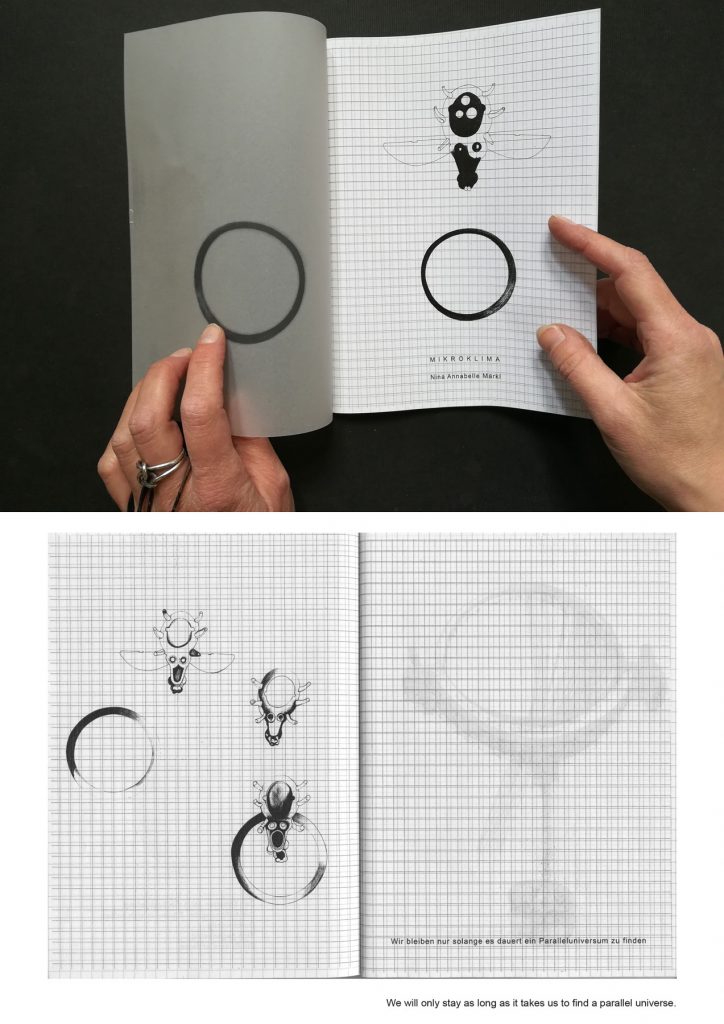
We can never tell anybody about how we really experience things. There is always a gap in between the words we use and how they are read by our vis a vis.
Words transport associations and memories, they are always translated and filtered individually. Artists use images, to articulate the specific space in between the words and the experience. The following drawings are accompanied by texts.
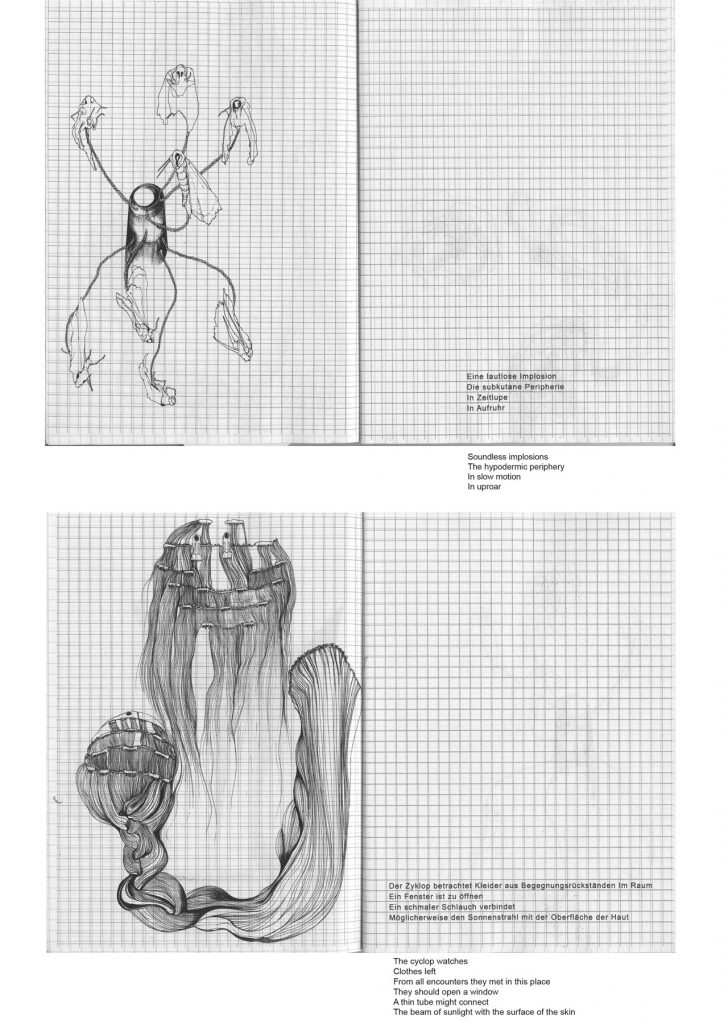
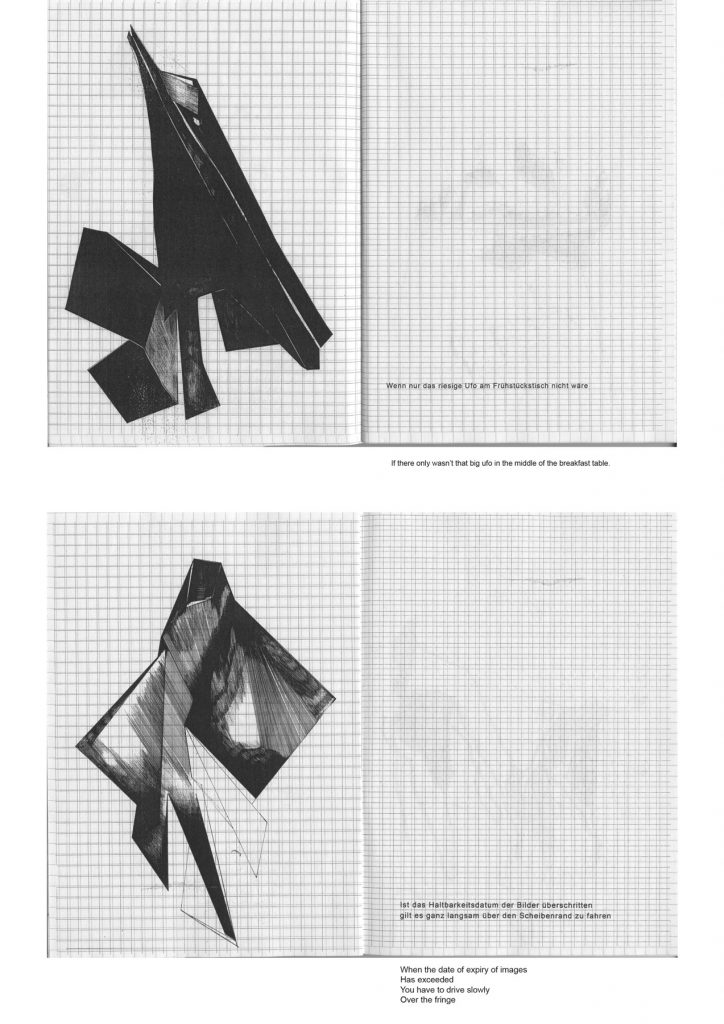
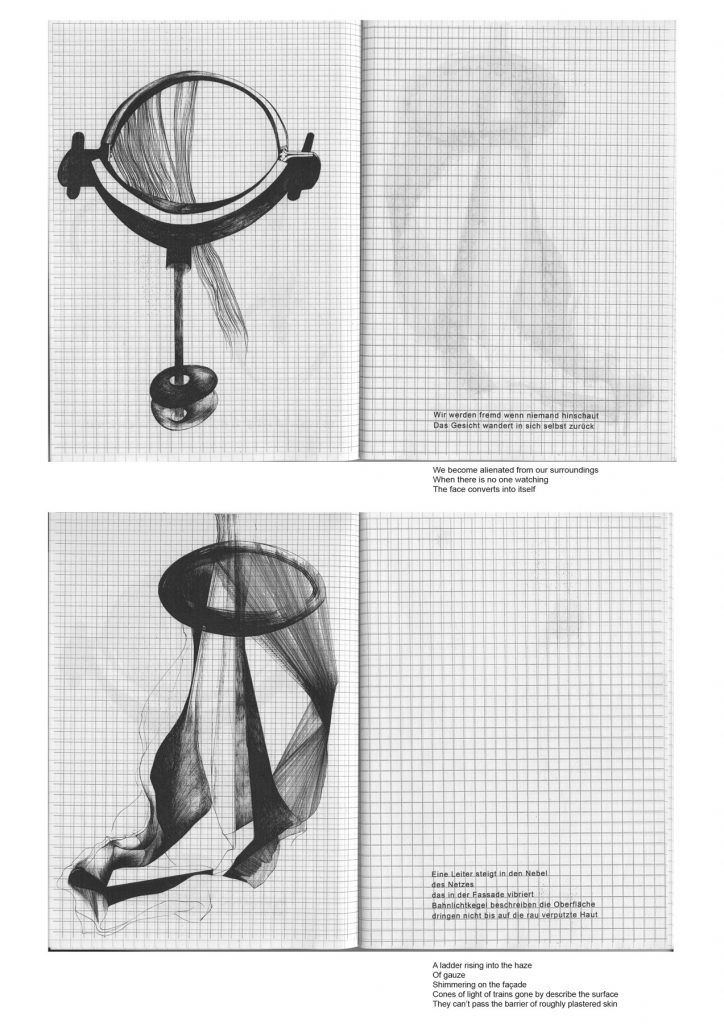
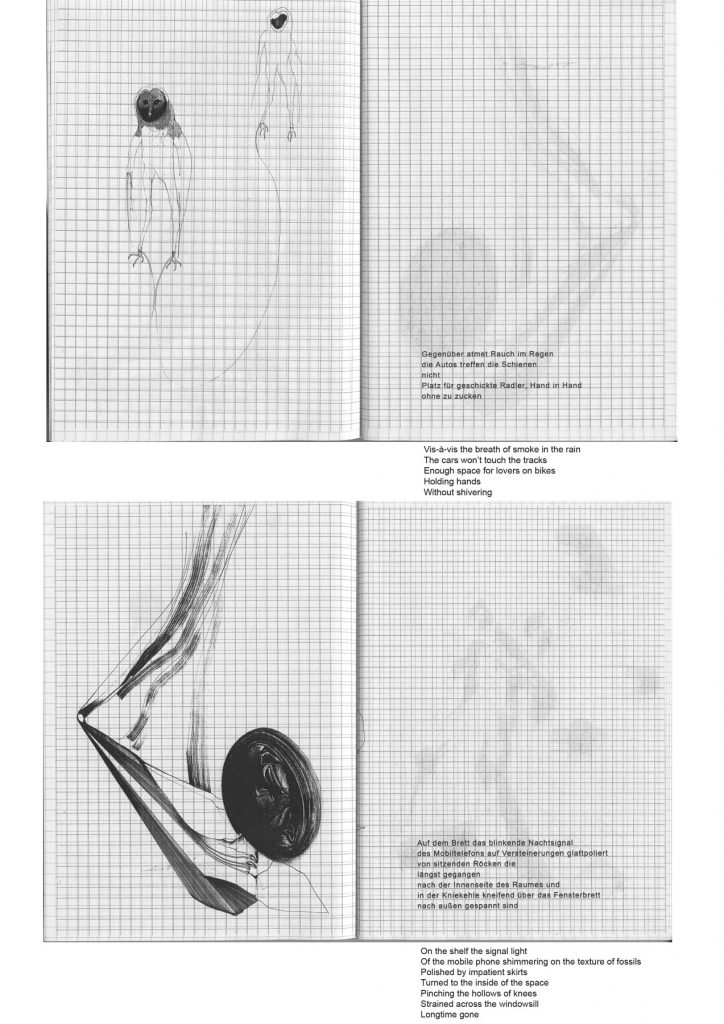
Image and text open up a space that grows in between the things you see and the things you read. The texts correspond with the images and still contain their own spaces and connotations. While translating the written images into English, I thought a lot about translation processes and about the possible spaces that might open up for people from all over the world reading the texts. I thought a lot about how a written image might change its meaning depending on how it is read in different places, with different language and different culture. And if there is something like a core feeling which yet might be transported despite the translation processes.
The relevance of articulation, translation and the invention of ways of showing and sharing both our work and our world as artists has become an important challenge during hardcore lockdown times and the enduring pandemic times. How can we develop ways of transporting the genuine feeling of art and art experience? How can we fulfill our destination as artists?
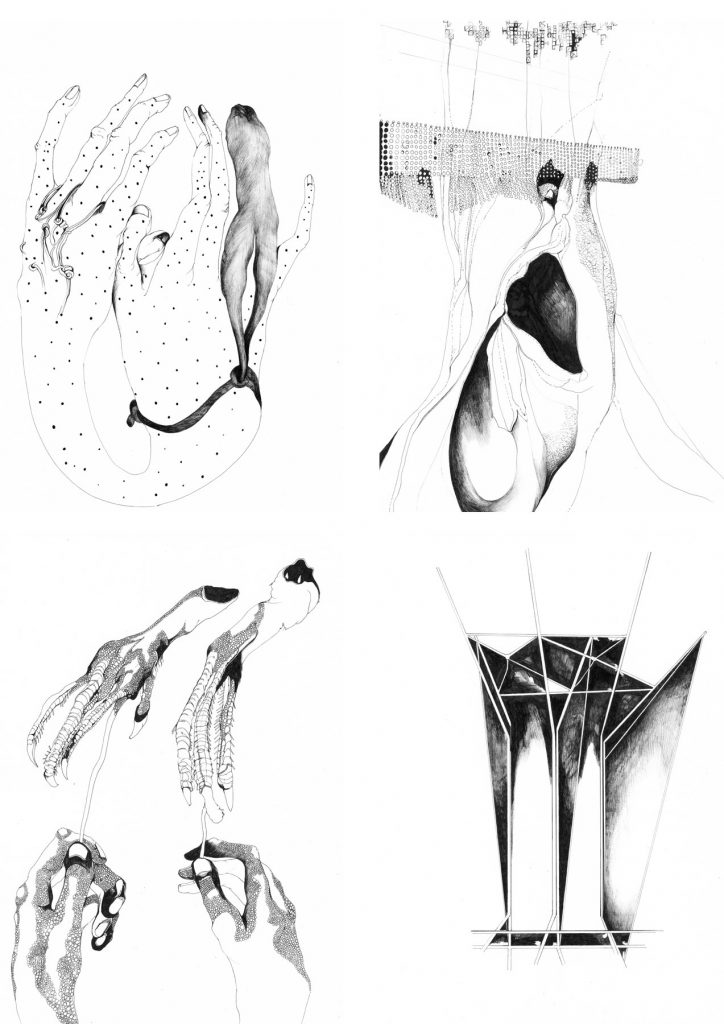
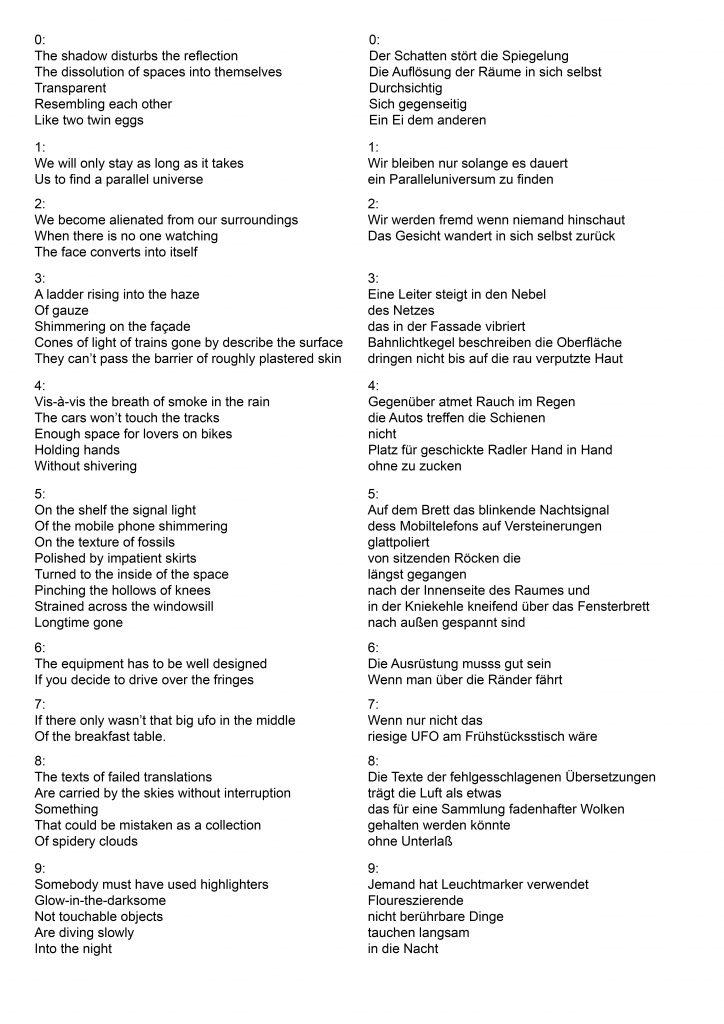
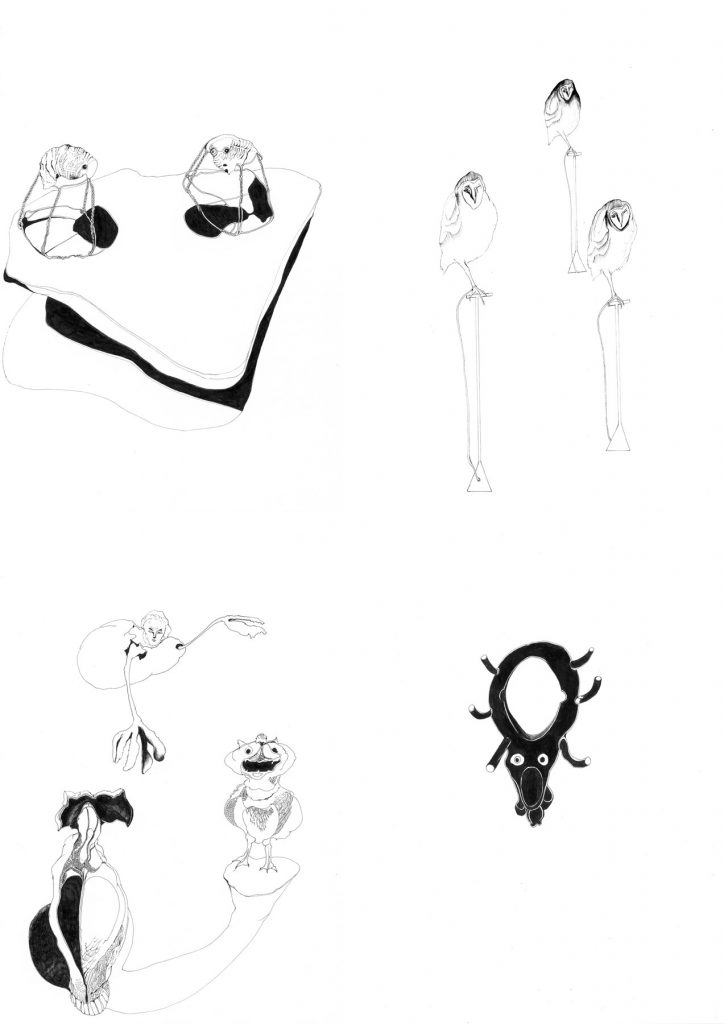
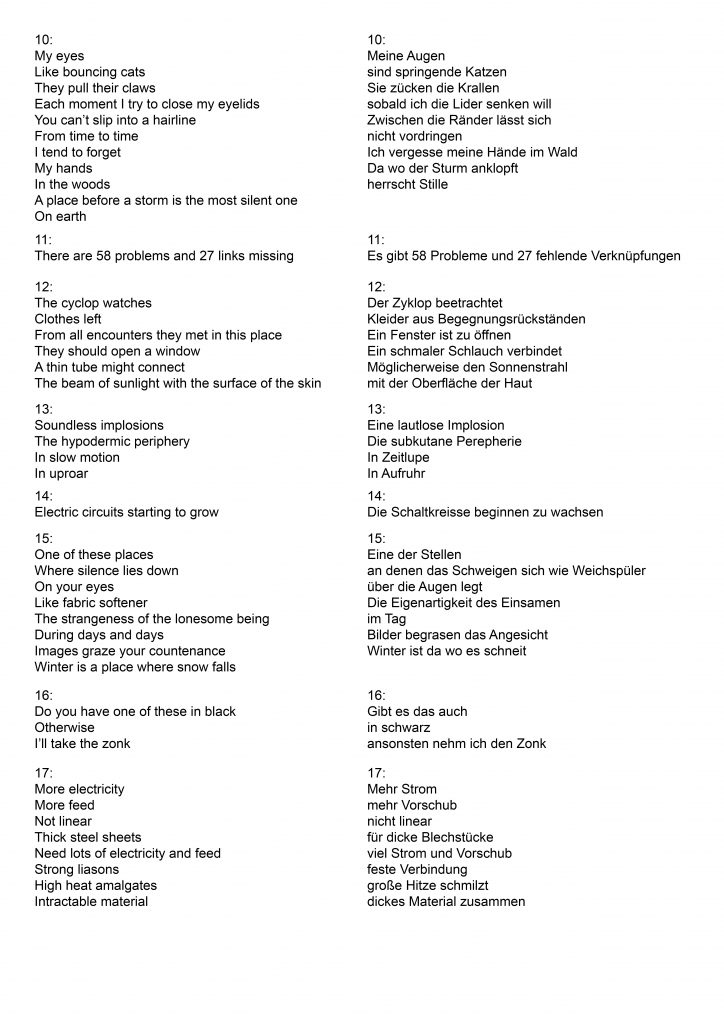
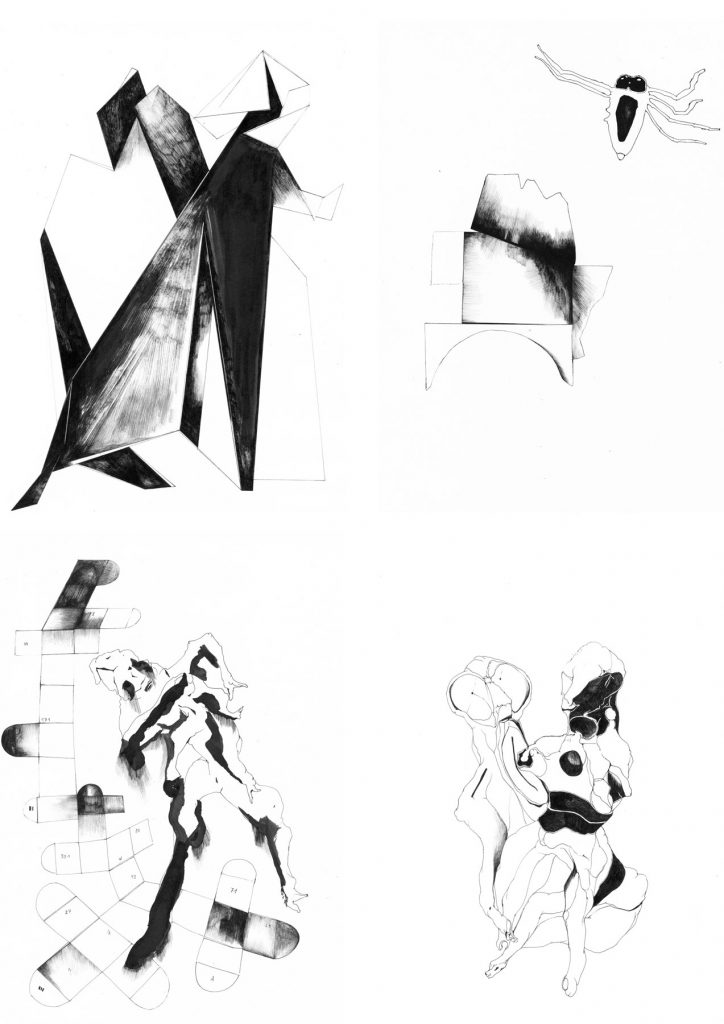
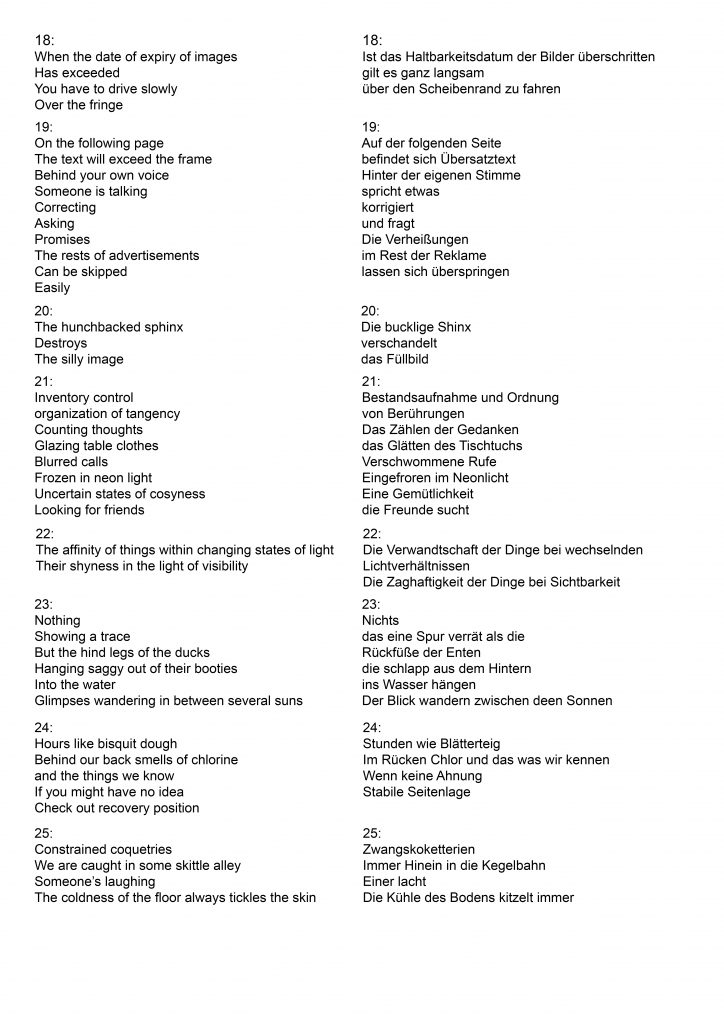
We need to talk about things that are important for us both as human beings and as artists and to make our artist worlds visible. That’s why this post is about the project which I started during hardcore lockdown times in April 2020. Each object, each thing, each thought becomes strange and questionable if you stare at it for a long time. And it seems to contain your own existence in a condensed way.
Facing pandemic times means facing yourself. Reflecting yourself, as an artist, as a human being, cocooned inside a clear, sterile and laboratory situation. A clear and precise view on things without depression. Things become whimsical. You begin to build constellations, stories and worlds out of almost nothing. The drawings and texts of the work “Mikroklima” are focused on this experience, without illustrating corona sceneries.
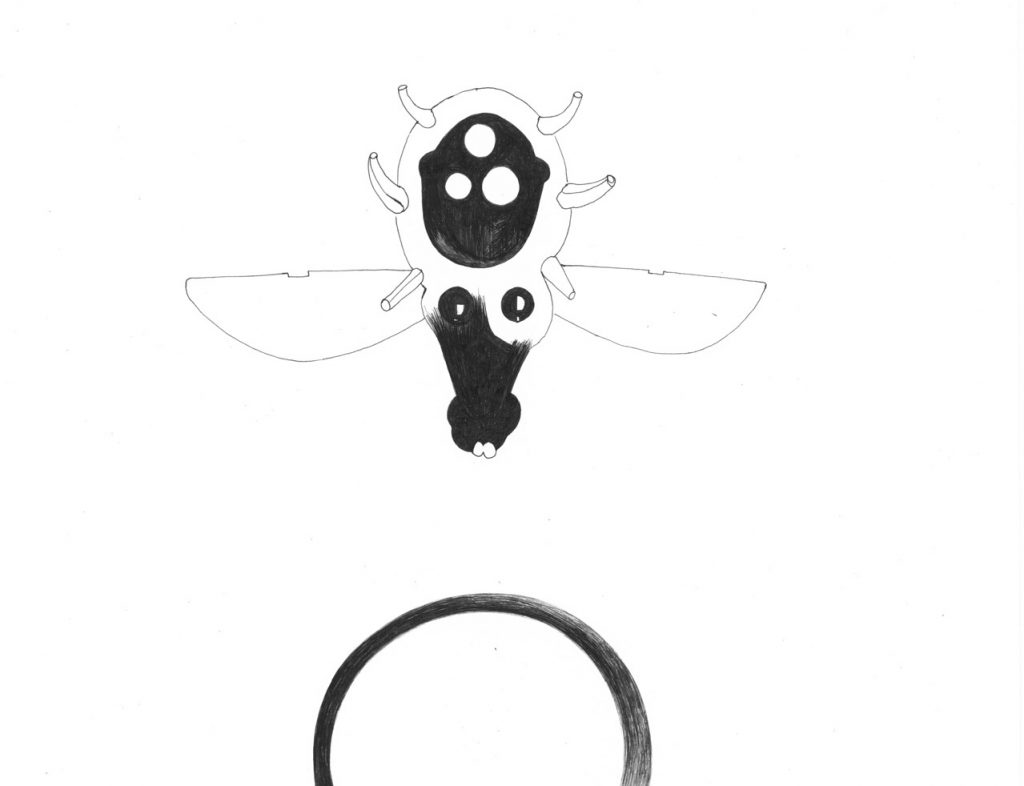
The genre of the still life is the genre of lonesomeness. The drawings show whimsical still life scenes without any human beings, forming a microcosmic narrative by connecting images and aphoristic texts with a fragmented, poetic, laconic and ironic atmosphere. To me writing poetry is quite similar to making an installation:
A poem is like a spatial setting. The space is defined through the relationship between things/images and words. The reader/the beholder individually fills the missing links within the process of reading/dialogue.
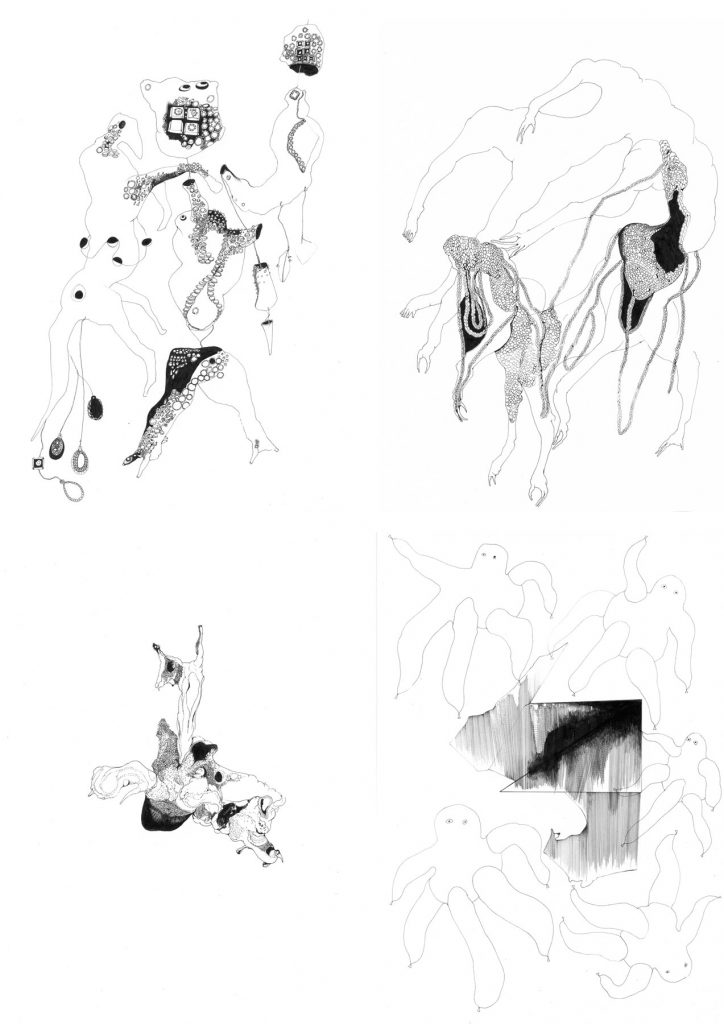
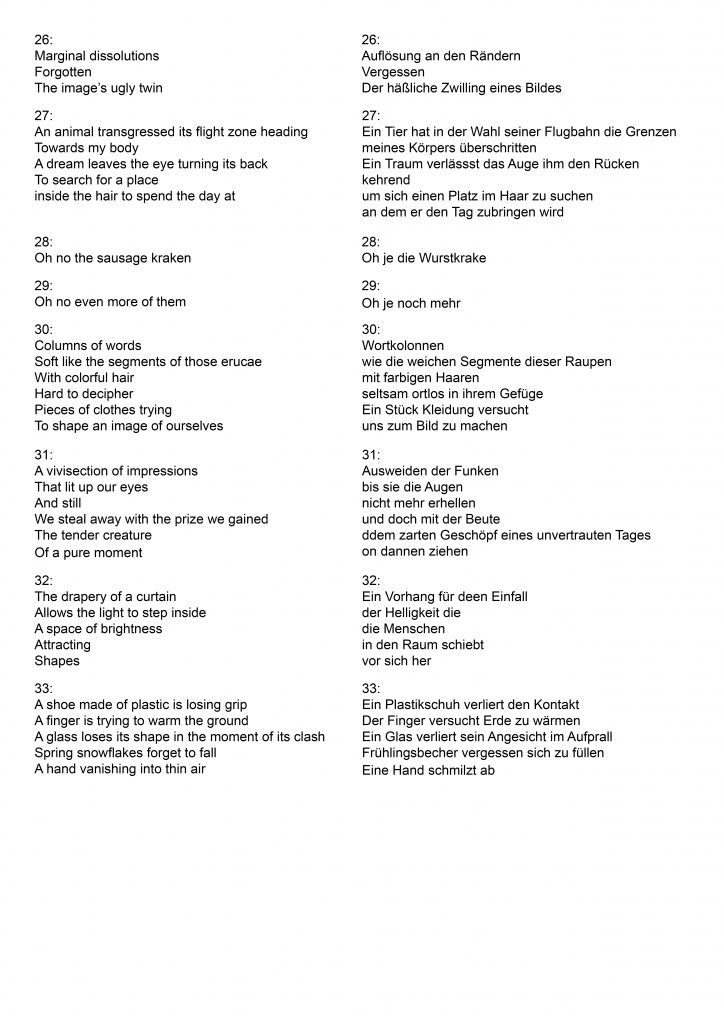
I made this work in April – I was supposed to be at an artist in residency place “Kunstarkaden Kempten” for one month. As could not go there in April I made a drawing and a text each day and sent them to the curatorial team there who installed them in the showcase of the studio space as a growing installation visible for the people passing by. I went for the residency two months later in June. I showed the drawings in real life, made a small DIY edition of the work which you can see above.
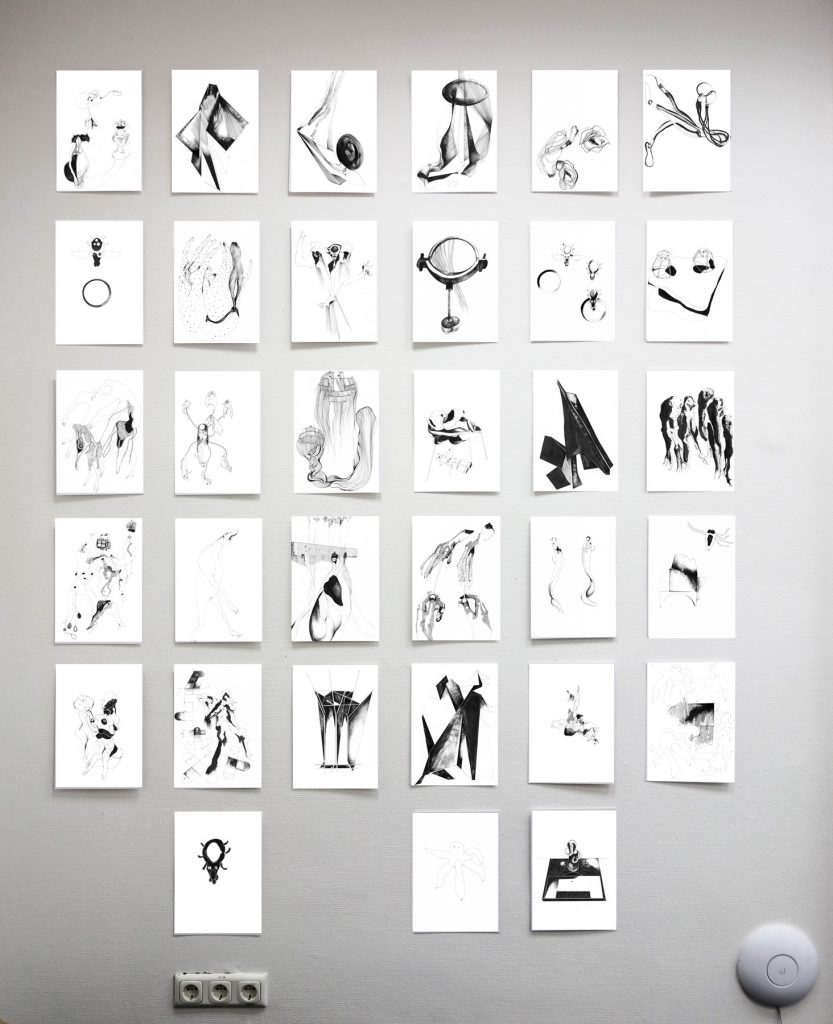
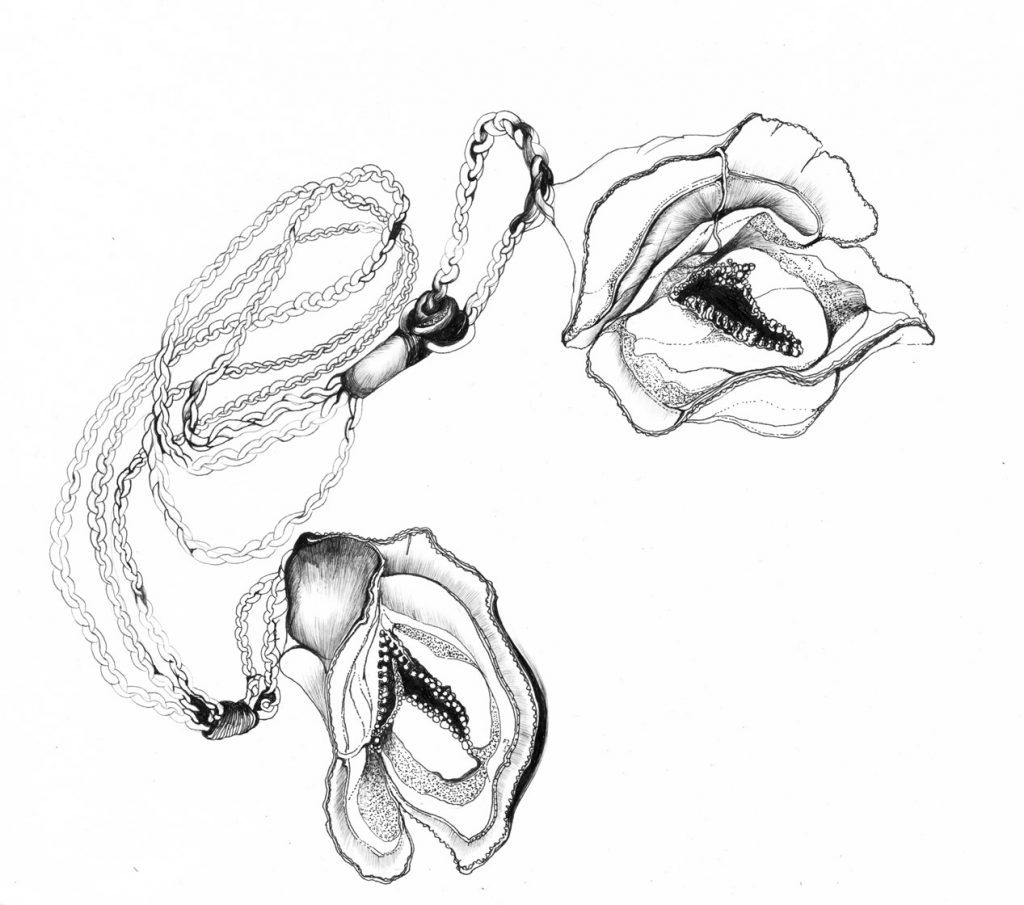
You Might Also Like:
Van Luong (1)
 Kjell Zillen (4)
Kjell Zillen (4) Mels Dees (9)
Mels Dees (9) Gao Yu (4)
Gao Yu (4)Katya Lebedev (1)
Juan Dies (1)
 Anastasia Prahova (2)
Anastasia Prahova (2)Nena Nastasiya (7)
Taarn Scott (6)
 Cynthia Fusillo (20)
Cynthia Fusillo (20)Roberta Orlando (8)
 Nanda Raemansky (25)
Nanda Raemansky (25) Eliane Velozo (22)
Eliane Velozo (22)Leyya Mona Tawil (1)
Julia Dubovyk (2)
Jianglong (2)
 Iara Abreu (23)
Iara Abreu (23) Agathe Simon (1)
Agathe Simon (1)Rosetta Allan (1)
Elizaveta Ostapenko (5)
 Valentin Boiangiu (2)
Valentin Boiangiu (2) Wesley John Fourie (9)
Wesley John Fourie (9) Renato Roque (3)
Renato Roque (3)Rosa Gauditano (5)
Neerajj Mittra (34)
Ciana Fitzgerald (5)
Boris Moz (3)
 Katerina Muravuova (5)
Katerina Muravuova (5)Kyla Bernberg (1)
 Muyuan He (1)
Muyuan He (1)Liza Odinokikh (2)
 Amalia Gil-Merino (2)
Amalia Gil-Merino (2)Paulo Carvalho Ferreira (6)
 Anastasiia Komissarova (2)
Anastasiia Komissarova (2) Yumiko Ono (1)
Yumiko Ono (1) Stefania Smolkina (1)
Stefania Smolkina (1)Lena Adasheva (1)
 Zahar Al-Dabbagh (1)
Zahar Al-Dabbagh (1) Emily Orzech (6)
Emily Orzech (6) Fernanda Olivares (5)
Fernanda Olivares (5) Noor van der Brugge (3)
Noor van der Brugge (3) Ira Papadopoulou (2)
Ira Papadopoulou (2) Tom Chambers (8)
Tom Chambers (8) Titi Gutierrez (3)
Titi Gutierrez (3) Franz Wanner (2)
Franz Wanner (2) Crystal Marshall (6)
Crystal Marshall (6) Transpositions III (36)
Transpositions III (36) Riddhi Patel (3)
Riddhi Patel (3) Michele Kishita (2)
Michele Kishita (2)Damian Carlton (4)
 Deanna Sirlin (1)
Deanna Sirlin (1) Laura Salerno (3)
Laura Salerno (3) Nina Annabelle Märkl (12)
Nina Annabelle Märkl (12) Elina Fattakhova (1)
Elina Fattakhova (1) Tasha Hurley (1)
Tasha Hurley (1) Ian Hartley (2)
Ian Hartley (2) Laurence de Valmy (2)
Laurence de Valmy (2) Ilia Bouslakov (5)
Ilia Bouslakov (5) Andrea Ahuactzin Pintos (4)
Andrea Ahuactzin Pintos (4) Sveta Nosova (3)
Sveta Nosova (3)Carlos Carvalho (1)
 Maria Timofeeva (1)
Maria Timofeeva (1) Jinn Bug (2)
Jinn Bug (2) Johannes Gerard (3)
Johannes Gerard (3)Irène Mélix (1)
 Aba Lluch Dalena (3)
Aba Lluch Dalena (3) Fabian Reimann (1)
Fabian Reimann (1)Natalia Gourova (1)
 Kate Finkelstein (4)
Kate Finkelstein (4)Raina Greifer (1)
James McCann (2)
Naza del Rosal Ortiz (1)
 Jay Critchley Jay Critchley (1)
Jay Critchley Jay Critchley (1) Vicky Clarke (4)
Vicky Clarke (4) Maria Silva (4)
Maria Silva (4) Shir Cohen (5)
Shir Cohen (5) Peter Shenai (4)
Peter Shenai (4) Bo Choy (4)
Bo Choy (4)Alina Orlov (2)
 Olga Popova (3)
Olga Popova (3) Coco Spencer (2)
Coco Spencer (2) Filippo Fabbri (2)
Filippo Fabbri (2)Daniele Leonardo (5)
 SISTERS HOPE (1)
SISTERS HOPE (1) Scenocosme : Gregory Lasserre & Anais met den Ancxt (4)
Scenocosme : Gregory Lasserre & Anais met den Ancxt (4) Anne Fehres & Luke Conroy (6)
Anne Fehres & Luke Conroy (6) Olesya Ilenok (2)
Olesya Ilenok (2) Marie-Eve Levasseur (4)
Marie-Eve Levasseur (4) Natalia Tikhonova (2)
Natalia Tikhonova (2)Ildar Iakubov (1)
 Evgeniy Lukuta (7)
Evgeniy Lukuta (7) Jarkko Räsänen (5)
Jarkko Räsänen (5)Maria Guta (6)
Egle Kulbokaite Dorota Gaweda (6)
Thomas Kotik (1)
 Andrea Stanislav (3)
Andrea Stanislav (3)Ludmila Belova (1)
Alena Levina (1)
 Ilia Symphocat (2)
Ilia Symphocat (2)Yevgeniy Fiks (1)
Star Smart(Formerly Trauth) (18)
Jyoti Arvey (1)
Les Joynes (2)
 Ekaterina Ivanova (1)
Ekaterina Ivanova (1) Lev Shusharichev (1)
Lev Shusharichev (1)Michael Stebackov (5)
Ryan Griffith (3)
Lidia Gordeenko (3)
 Masha Danilovskaya (7)
Masha Danilovskaya (7) Irina Korotkaya (2)
Irina Korotkaya (2) WagtailFilms Oksana Bronevitskaia&Dmitry Zhukov (5)
WagtailFilms Oksana Bronevitskaia&Dmitry Zhukov (5)Kostya Diachkov (1)
Elena Sokolova (3)
Alexander Nikolsky (2)
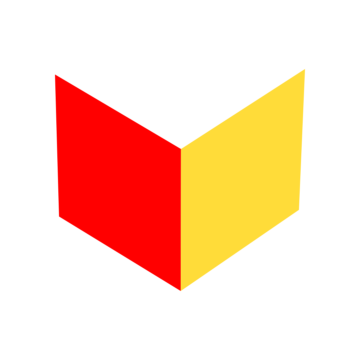
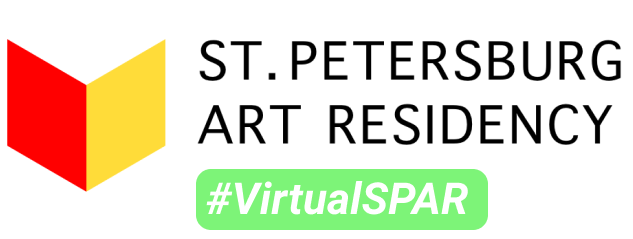
4 Comments
I really enjoyed this body of work. The drawings are very engaging and aesthetically pleasing to look at. I like how crisp and dark the images are in comparison to very light areas. The statement made me really think about the impact of words versus imagery and the gap in between as you mentioned. I find image and concept to be very universal where as with language geographically and contextually may have its limitations. I admire the implementation of both to communicate to the viewer, allowing them to draw their own conclusions between written and drawn material. Very inspiring!!
Thank you so much. For me it was the first time to show a project that connects poetry and drawing and to translate them into English.
Before that project it was quite difficult to get connected to people to share these ideas and to talk/write about them.
I think this platform is a great medium to both get to know artists in their different ways of working and thinking…and so the moment of translation processes within all fields of art become visible… What interests me a lot is the connection between perceptions which are universal, experiences which are individual, the gaps within the own language and the gaps which lie in between different languages.
I think those “gaps” are spaces which can be really enriching and can lead to a sensitivity for complexity of language(s). And to enjoy the complexity of things in general…..
I wanted to ask you about the gap between German and English texts, but you’ve answered in the text. I don’t have you known about our project Transpositions-3 when you realised the Mikroklima. If you didn’t hear about it, it’s a fantastic intersection. Please get to know it because of the main topic of the Gap. The collective exhibition became virtual, you can read some poems of Joanna Ellmann, Tallinn’s author. Her lyrics sounds also a little abstract to me: her transpositions’ post
Do you have any poets you follow?
What a wonderful idea of poetry as installation! You wrote about specific relationship between words, things and space. Did you think about digital being of the poem, is it important for perception?
What was first in the Mikroklima by the way: word or image?
Did you draw the graphics by gel pen?
I am fascinated by the imponderable aluminum sparkling wine lockers are great and funny.
Wow, the project looks great. I didn’t know about it.
I have always felt a strong intersection between poetry – installation and drawing. Before my studies of Fine Arts I studied German literature.
And in fact I have been looking for poetry artists to work on a project together for some years now. I highly appreciate the poetry by Lee-Ann Brown, a poet I got to meet during my stay in NYC in 2015, I lived in her house, and we had an interaction project while I was there…
So, thank you really much for sharing the project.
In my work “Mikroklima” the drawing leads to the poem and the poem leads to the drawing: Sometimes the drawing is first, sometimes the poetry and sometimes they develop in a parallel way…The interaction of spaces becomes fluid, and that’s the point which interests me the most.
I think the digital way of perception is interesting, as for me the whole setting becomes even more abstract: The spaces you step in while reading and looking at a drawing are located within a digital space of “possibilities”: It creates both an intimate experience of reading and an experience that can be shared with a lot of people. The poem/drawing and the experience with is so both part of the own intimate experience and it becomes part of an extended brain with possibilities to intersect and to connect. ….
I made the drawings with a pen called “rapidograph”…It’s a pen filled with ink, which is often used by architects 🙂